Why Driving The Dodge Viper Is Still An Epic Muscle Car Experience
This iconic sports car remains beautifully unrefined.
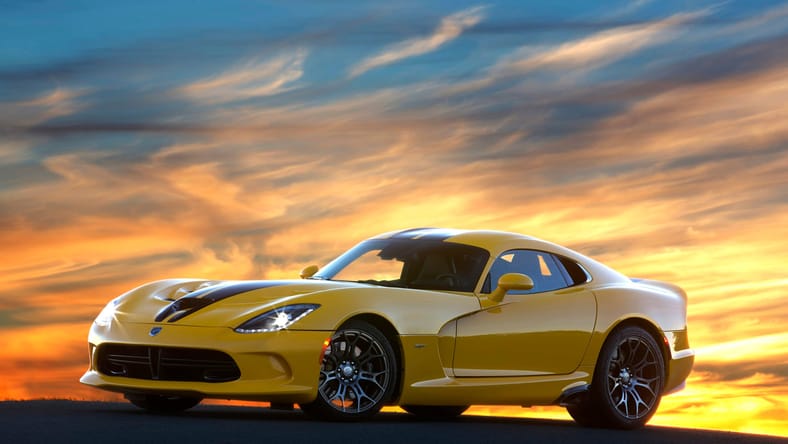
I can’t write an objective review of the Dodge Viper. That’s partly because the Viper is possibly the least objective car ever mass-produced by a major manufacturer. It’s partly due to other factors.
I wrote the book on the Dodge Viper. Literally. I ran a Rock ‘n’ Roll half-marathon with my friend and Fiat Chrysler Automobiles global head of design—and Viper torch-bearer—Ralph Gilles. The engineering executive responsible for the Viper, Russ Ruedisueli, is a fellow Formula Ford race driver.
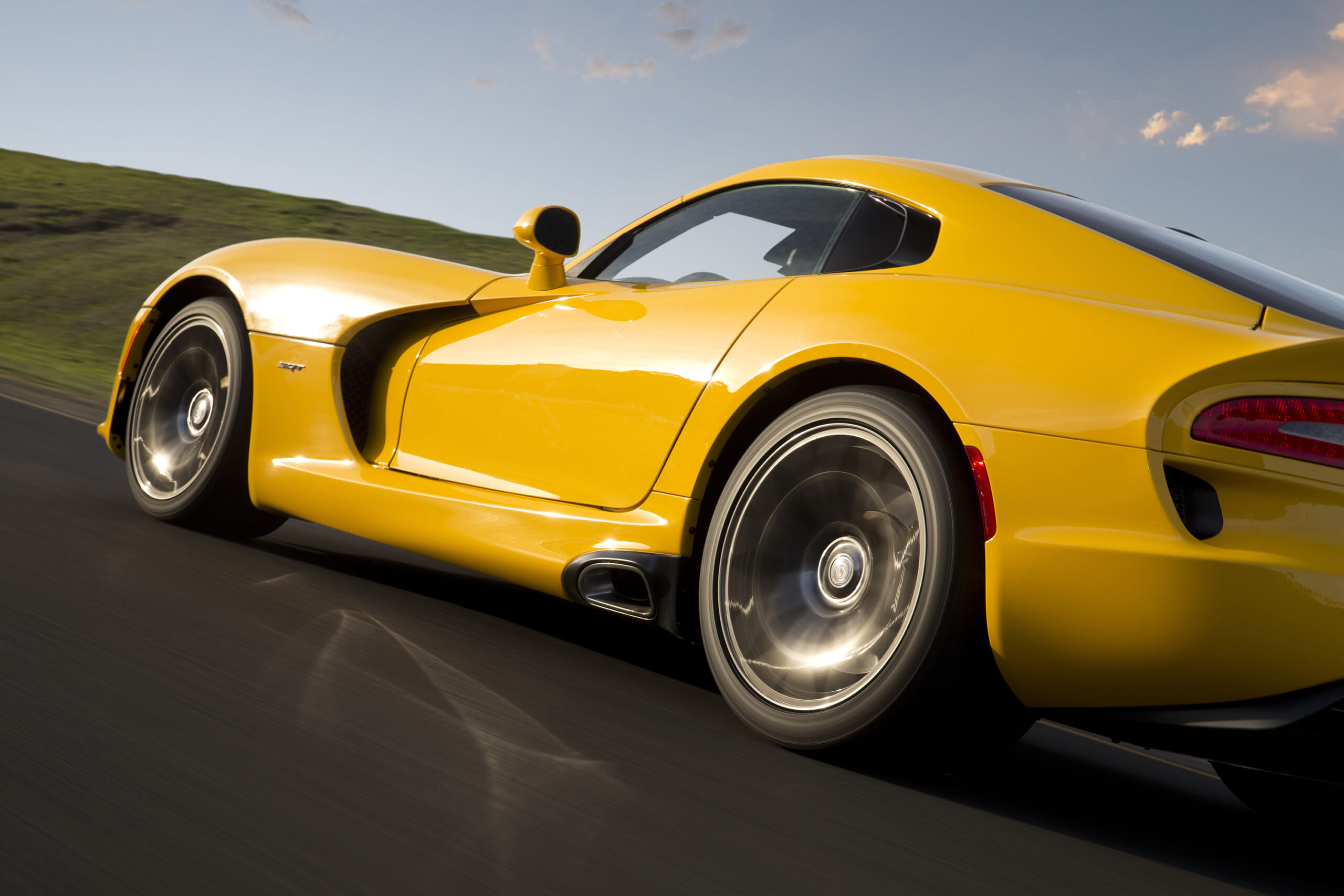
The Viper is a wonderfully irrational machine at a time when so many cars are painfully rationalized for measured efficiency, safety and cost. The Viper balances libido, pavement-shredding performance and a body-shaking physical experience merging sound, vibration and heat.
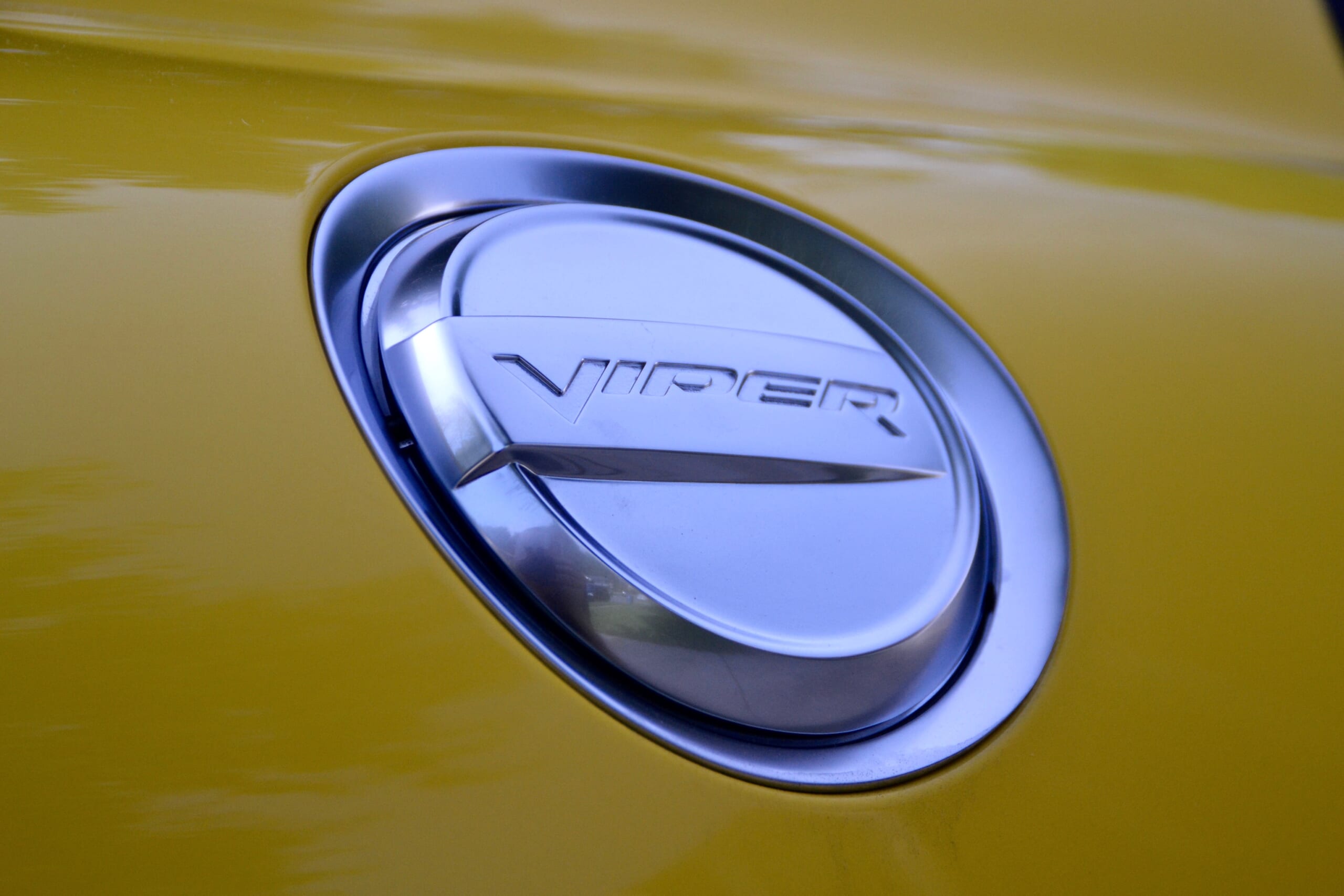
The tested 2016 Dodge Viper GTC’s base price is $95,895, following a price cut last year in response to competitive pressure from the insanely fast Chevrolet Corvette ZO6. As equipped for our drive, the Viper’s bottom line was $113,390, and that included the optional Advanced Aerodynamics Package’s carbon fiber front splitter and rear spoiler. There was also the luminous pearlescent yellow paint for $2,000 and the awesomely vented SRT hood for another $500.
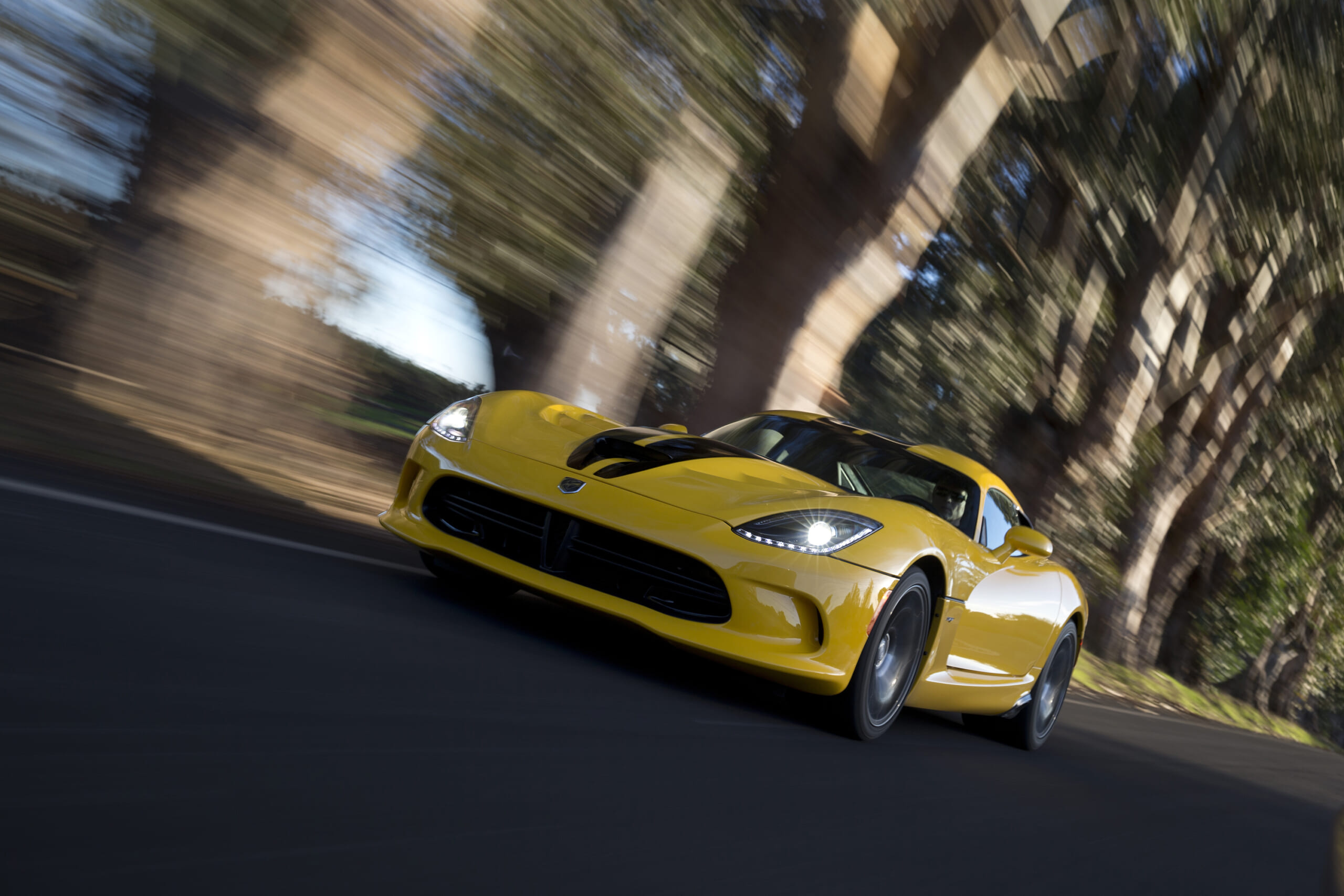
The 645-horsepower, 8.4-liter V10 engine is standard, as it has been on every Viper since the car’s debut in 1992 (though it made only 400 hp in the early days). The car’s six-speed manual transmission is the only available gearbox, and it has no rev-matching or other technology to simplify its use for the non-proficient. Its EPA combined fuel economy rating is 15 mpg, though that may be a shade optimistic for anything but continuous highway driving.
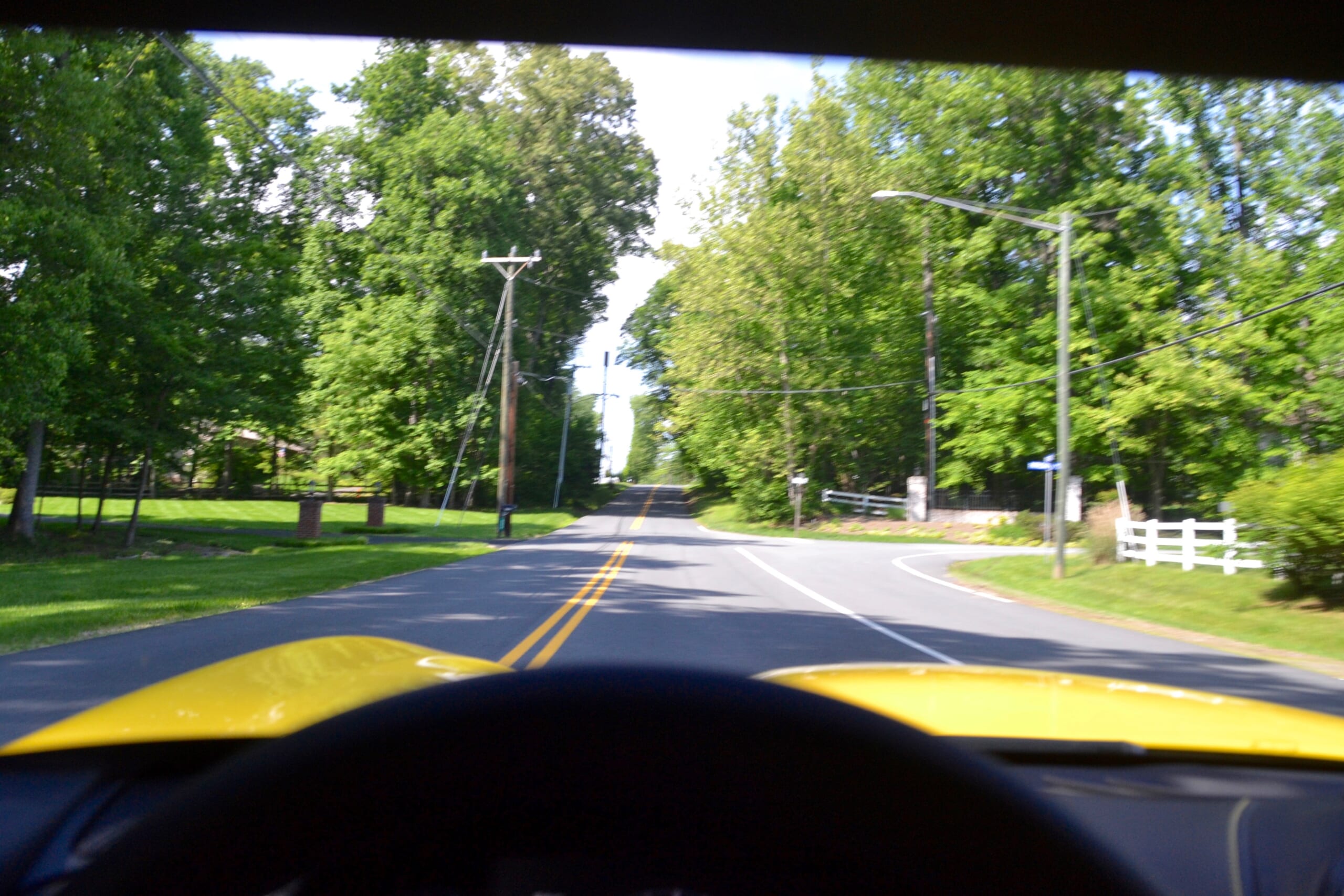
The Viper is a modern interpretation of the Shelby Daytona Coupe, a ‘60s race car that made a strong impression on me. Today, you can buy a new Coupe from Superformance—further proving that design’s enduring appeal.
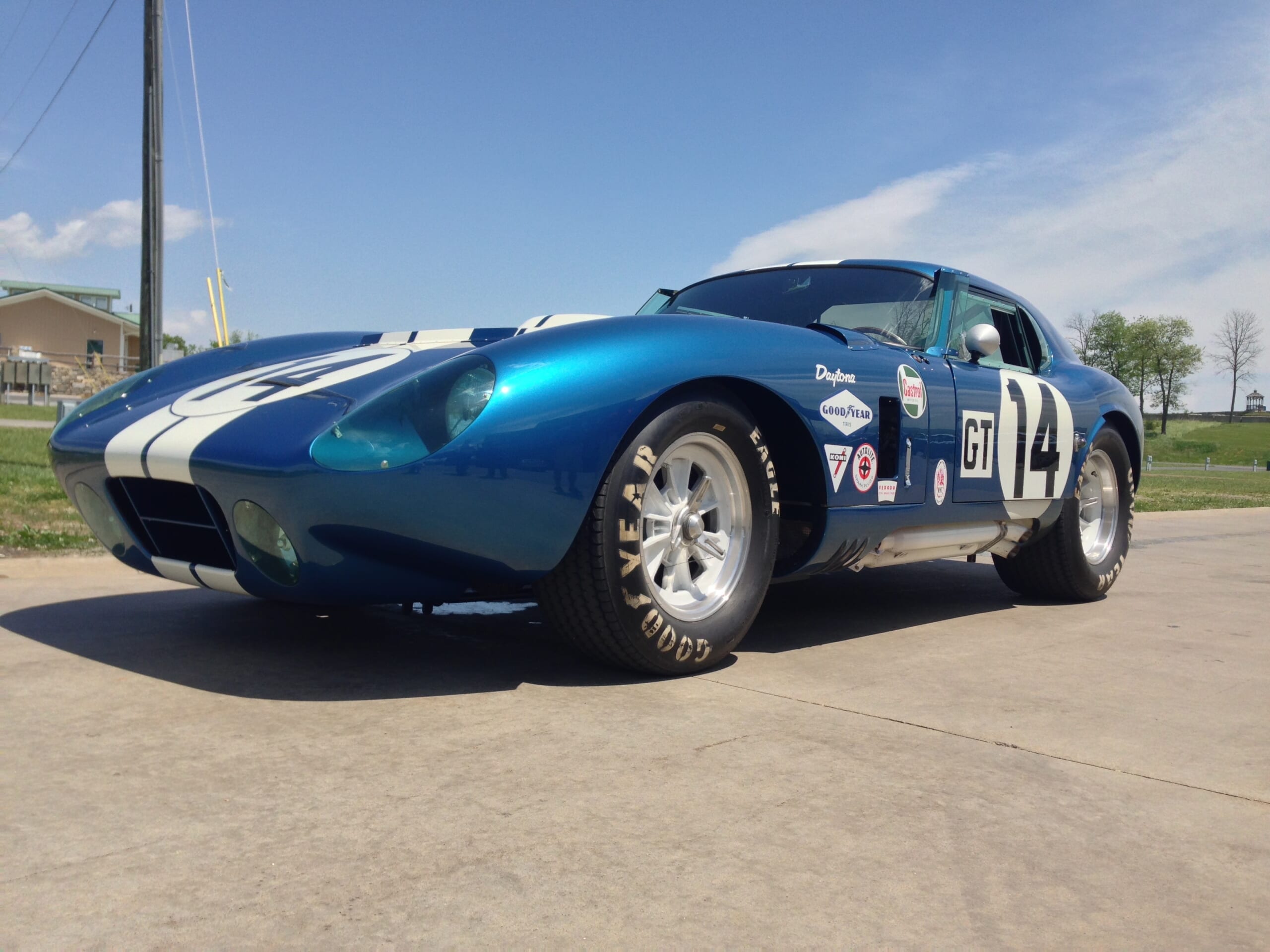
Though the 2016 Viper passes all modern crash safety requirements and enjoys added electronic safety aids like 5-mode electronic stability control and rain brake support to help keep the roaring V10 coupe pointed straight at all times, nothing about this car feels watered down.
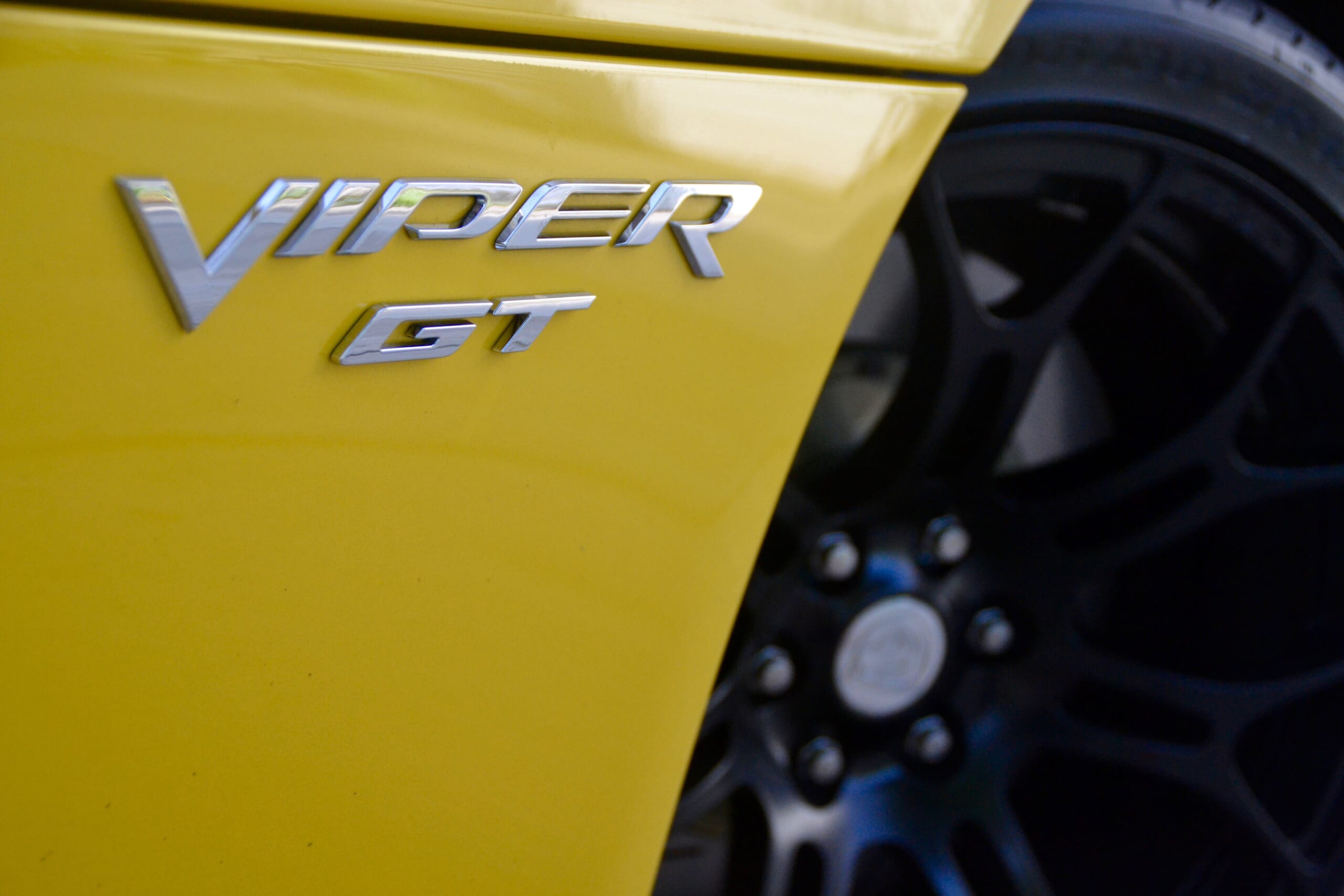
The aforementioned full-body experience from the engine alone ensures that. Some new cars prevent the driver from engaging the starter while the engine is running because silent engines make it easy to think those cars are shut off when they are idling. The Viper needs no such protection.
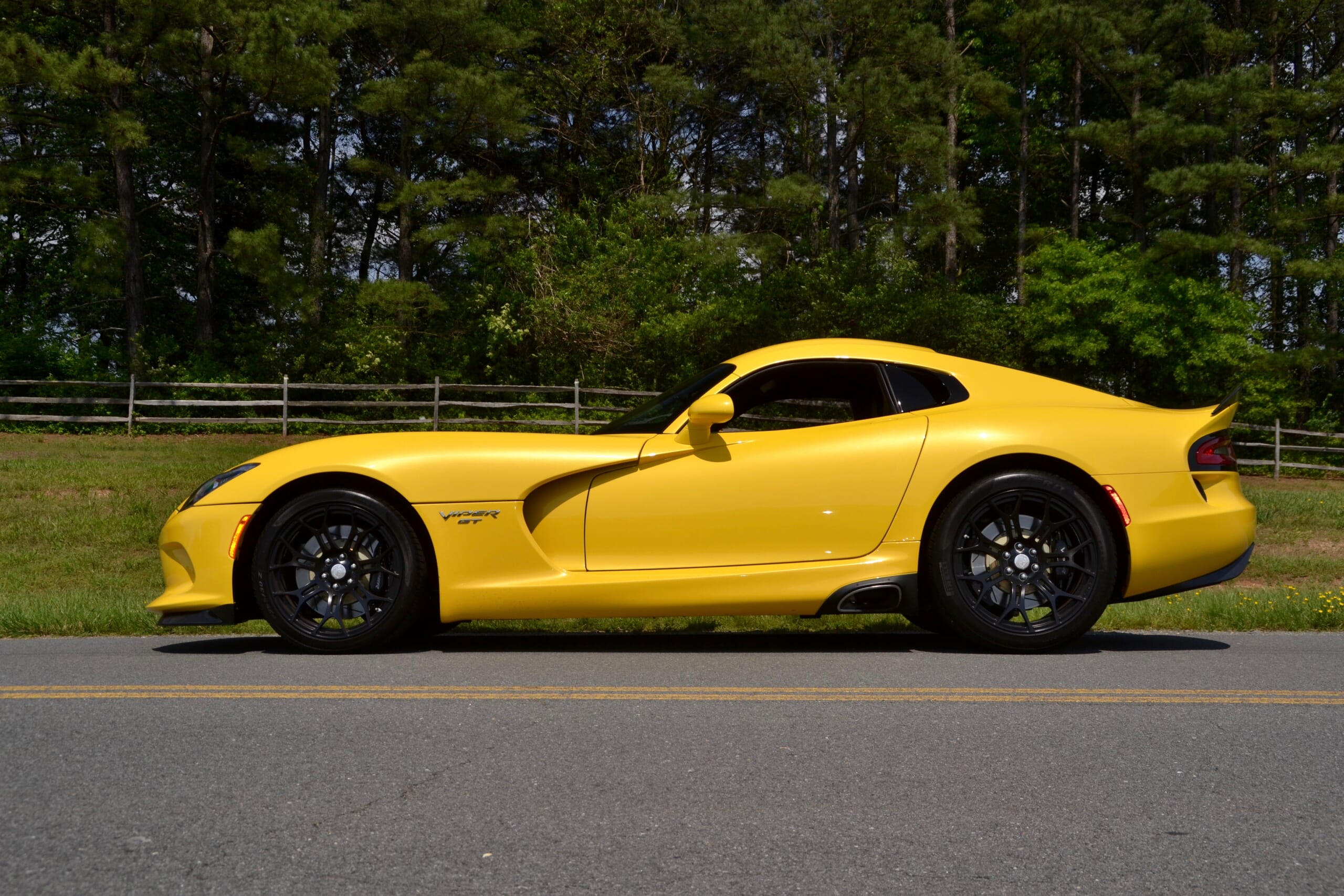
The V10 sings through side pipes that wind through the Viper’s door sills, leaving them almost as unfriendly as ever to bare calves. But unlike early models that would sear your leg upon contact, the current edition has enough insulation to give you time to move before you end up with a burn mark.
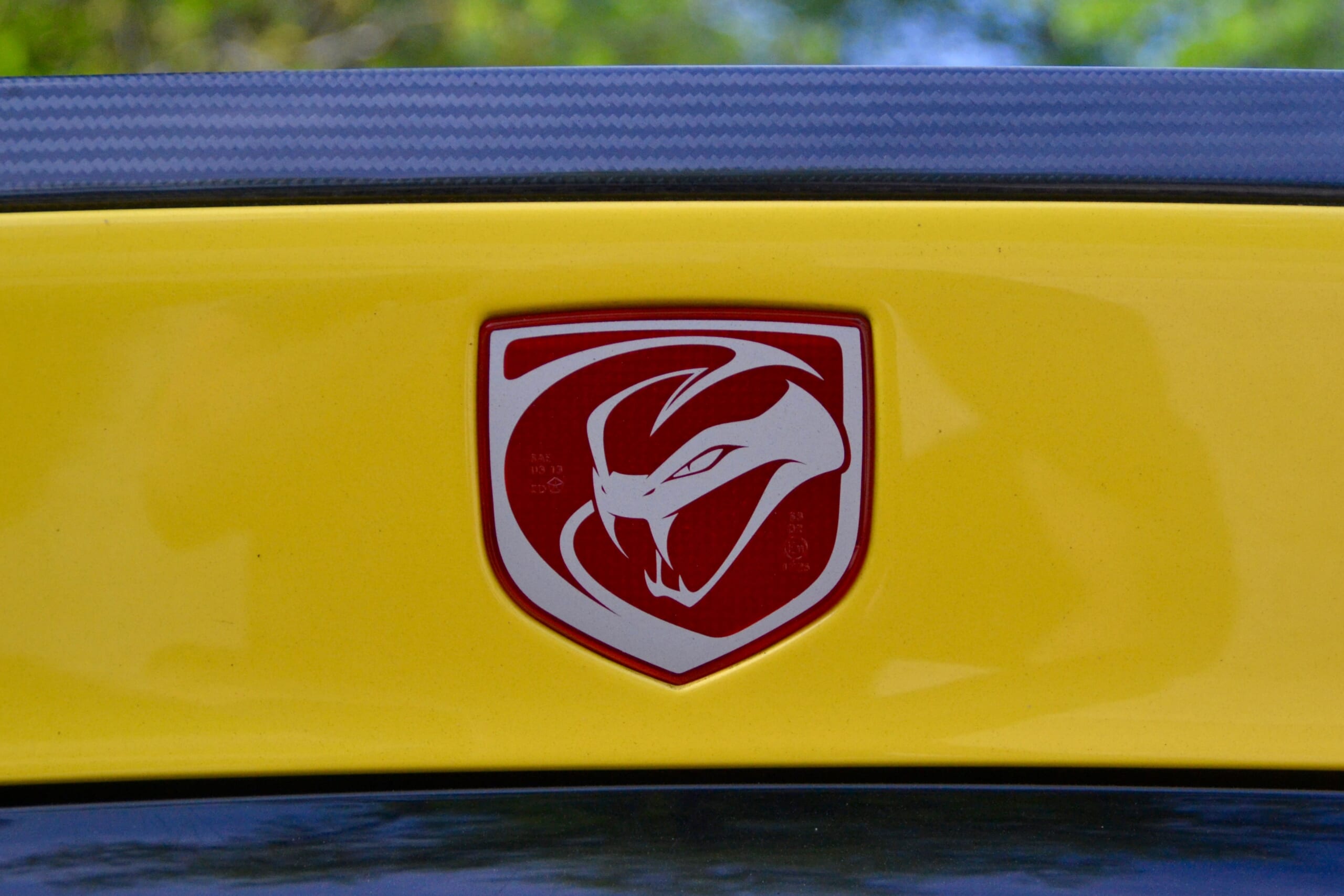
The gargantuan engine coughs to life with a press of the Viper’s starter button, shivering the car’s leather-accented cabin. The fat shift knob is a short reach, and it flicks between gears with a satisfying, hefty “clunk.”
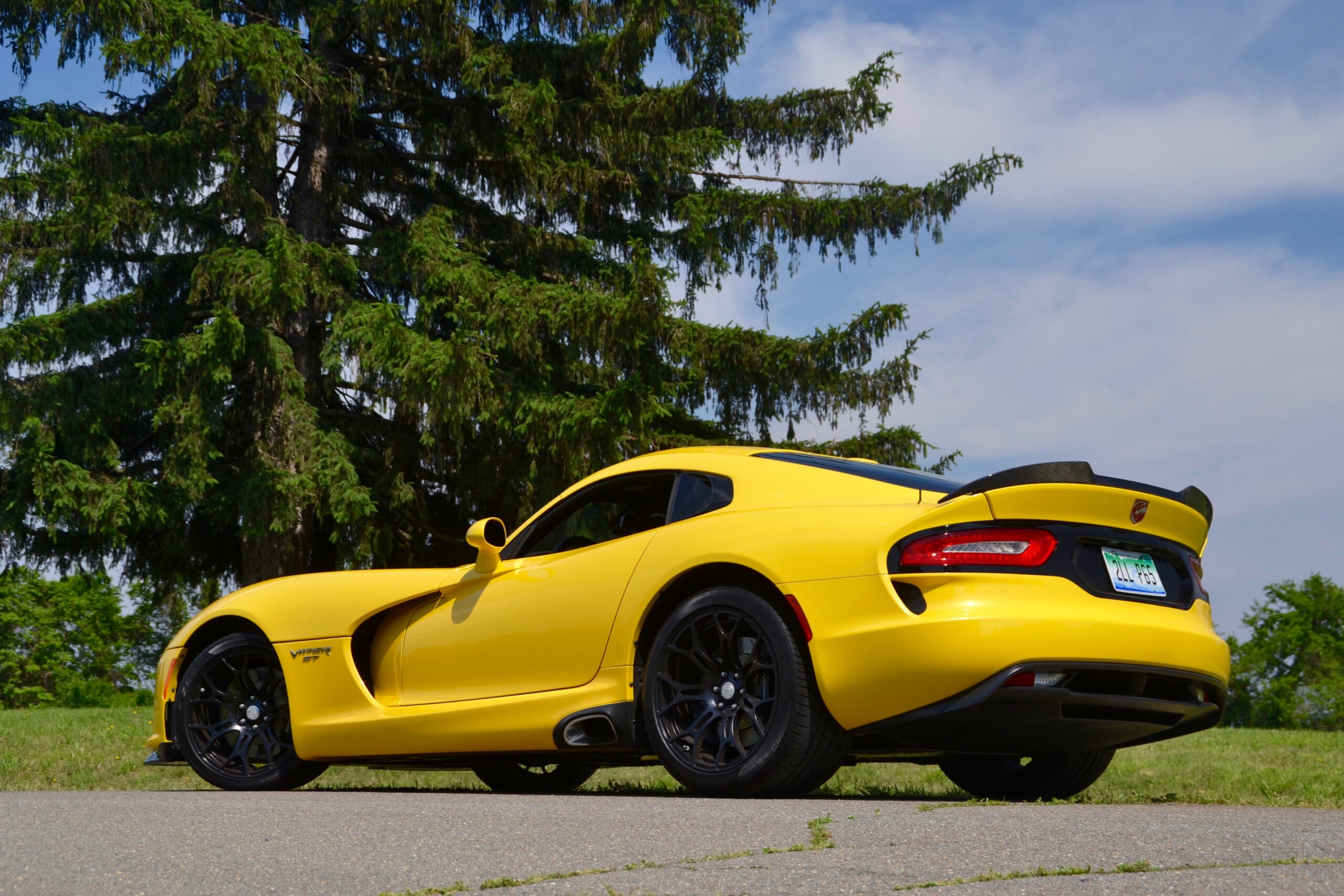
You have to press the clutch pedal before changing gears, and you might think it takes both feet, such is the Viper’s pedal effort. Stick-shift purists might love Dodge for refusing to use an automatic transmission in the Viper, but the car’s clutch will task anyone who skipped leg day at the gym. The Viper’s gearing lets the car do 70 mph in first gear. With a 206 mph top speed that means you don’t have to shift as frequently as in other cars.
Despite its long hood and heavy engine, the current-generation Viper enjoys superlative turn-in response. A mammoth aluminum bridge over the engine bay conveys would-be twisting force from one side of the car to the other for reinforcement that produces unexpectedly precise steering, as input actually turns the car’s wheels instead of twisting its frame.
This makes the Viper agile enough to remind me of the car’s glory days as an endurance racer, when Vipers dominated the 24 Hours of Le Mans between 1998 and 2000. However, this car’s brakes are better suited to spirited street driving than all-out track performance, as they struggle to arrest the Viper’s abundant speed. The soft brake pedal that results from hot laps is avoided in the Viper American Club Racer edition, with its full complement of track-ready hardware, including upgraded brakes.
On the street, the Viper is more tolerant of gutters and driveway cuts than most super-performance cars, even with the carbon fiber splitter beneath its front bumper. The Viper’s voice and lines tell observers that the driver wants to be noticed—which is good if you’re into that. One advantage: slow left lane hogs tend to move to the right when the Viper approaches.
The day is coming when silent, electric, bloodless, autonomous transportation modules will whisk us safely and efficiently to our destinations with no style, excitement or drama. Thankfully for the Viper, and for us, today is not that day.
